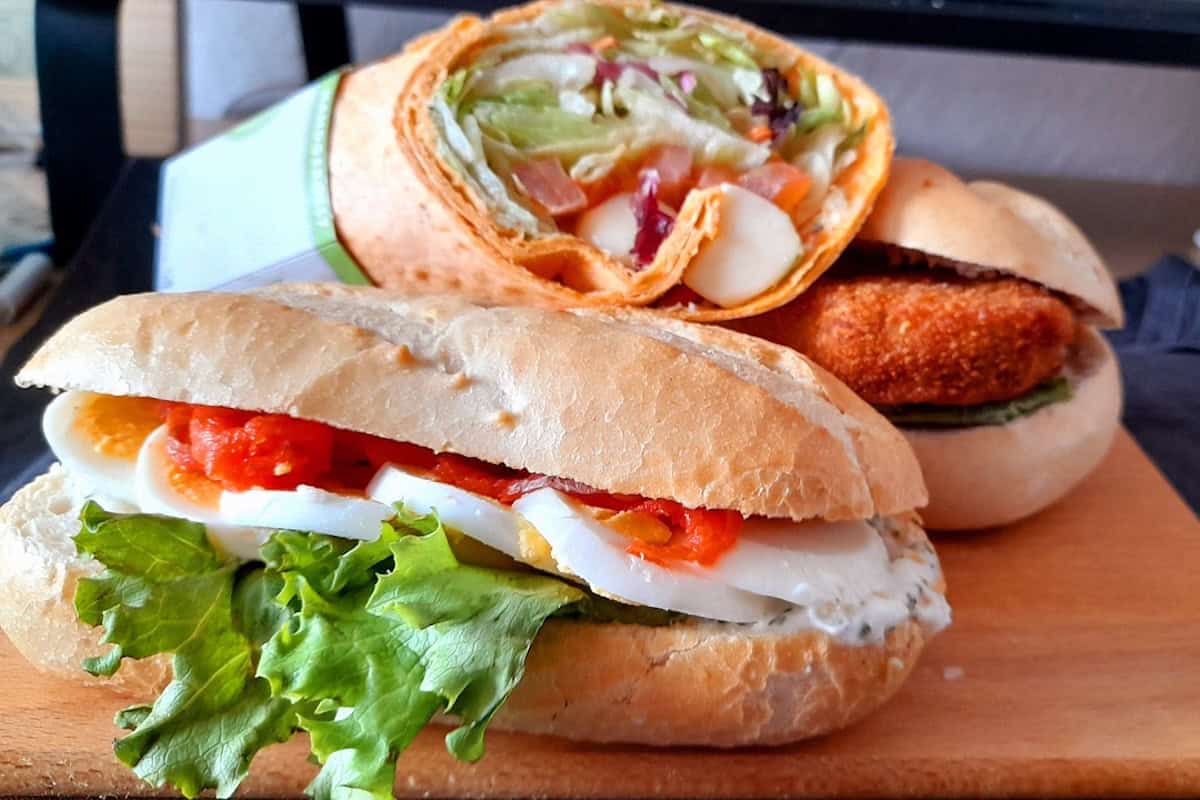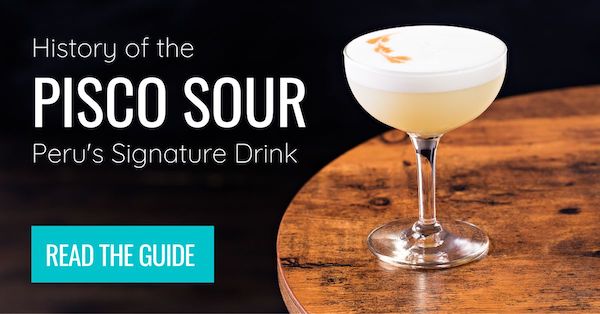
Can You Take Snacks Through Airport Security? Your Quick TSA Food Guide
By: Sarah Stone
Skip to Section
Article Summary
Airport food prices make your wallet cry harder than watching a rom-com after a breakup. If you’re tired of paying $20 for a sad sandwich that tastes like cardboard with a side of regret, bringing your own snacks is the move.
This guide breaks down TSA’s food rules so you know what makes it through security and what gets tossed faster than evidence in a corruption case. You’ll learn why solid foods sail through checkpoints while anything spreadable gets treated like a potential weapon, plus get smart packing strategies that keep you fed without breaking the bank. The article covers questions from international travel complications to special exceptions for babies and medical needs.
- Solid foods like sandwiches, fruit, and granola bars pass through security without question, but spreadable items follow the 3.4-ounce liquid rule
- Pre-made sandwiches with condiments get approved because the spreads are contained within the sandwich rather than separate
- International destinations may restrict fresh produce to prevent agricultural pests, so pack commercially produced snacks for safety
- Frozen foods pass inspection if they stay completely solid at the checkpoint, giving you a narrow window for frozen smoothies
- Smart packing in clear containers near the top of your carry-on speeds up screening and keeps TSA agents happy
Not a fan of the $20 airport sandwiches? Me neither. If you want to save money and bring your own snacks for your flight, here’s a quick guide for what you can and can’t bring, and how to pack it!
The Basic Rule for Traveling with Food
TSA treats solid foods differently from liquids, and this distinction determines whether your snacks make it through security or end up in the trash.
Solid foods get the green light. Crackers, cookies, sandwiches, fruit, nuts, and anything you can’t pour or spread sail through security without issue.
The problems start when your food becomes liquid, gel, or paste. These items fall under the 3-1-1 rule, which limits containers to 3.4 ounces (100 milliliters) or less, and all your liquid containers must fit in one quart-sized plastic bag.
Peanut butter counts as a liquid according to TSA. So does hummus, yogurt, and that fancy artisanal honey you picked up at the farmer’s market. If you can spread it on bread or scoop it with a spoon, TSA considers it a liquid.
Snacks That Make it Through Security
Classic Travel Snacks
Granola bars and protein bars work perfectly for travel. They’re filling, portable, and TSA agents never give them a second look. Trail mix falls into the same category, whether you buy it pre-made or create your own blend of nuts, seeds, and dried fruit.
Crackers and pretzels travel well and are great for long flights. Chips are allowed, too, even family-size bags. Cookies and brownies make the journey without problems, assuming you can resist eating them before takeoff!
Fresh and Substantial Options
Fresh fruits and vegetables pass through security without restrictions, though depending on where you’re traveling, you might not be able to take them along, as invasive plant pests can damage ecosystems. Apples, bananas, carrots, and celery sticks all work great for travel. Just remember that some international destinations restrict agricultural products, so you might need to eat or discard fresh produce before landing.
Sandwiches are travel gold. Even if they contain condiments like mayo or mustard, pre-made sandwiches get approved because the spreads are included within the sandwich, not separately from it.
Hard cheeses like cheddar, Swiss, and Parmesan blocks travel without restrictions, but soft cheeses like Brie can melt into liquid – so be choosy with your cheeses! Cooked meats, hard-boiled eggs, and even cold pizza make it through security. Candy and chocolate won’t cause problems either.
The Surprising Winners
Whole cakes and pies get TSA approval, though you might get some curious looks from fellow travelers. Fresh eggs in their shells are allowed if you pack them carefully.
Frozen food passes inspection as long as it remains completely solid at the security checkpoint. That frozen smoothie might potentially work if you time it right and the security line moves quickly, but we wouldn’t recommend testing it because you might have to drink it right there or toss it out.
Foods That Need Special Handling
These snacks follow the 3.4-ounce liquid rule – if you want to travel with more, you’ll need to put it in your checked bag.
Spreadable Foods
Any nut butter, including peanut, almond, or cashew butter, gets treated as a liquid. The same goes for Nutella, cream cheese, and soft cheeses like Brie or Camembert. If you want to bring these items, buy travel-size containers or transfer small amounts into TSA-approved containers.
Hummus and guacamole fall into this category, too.
Spoonable Items
Yogurt, pudding, and applesauce all trigger the liquid restrictions. Soup, even thick varieties, gets the liquid treatment. Salsa and most dips need to follow the 3.4-ounce rule.
Tricky Cases
Nut butter squeeze packs might look solid, but TSA considers them liquids. Fruit pouches for kids are also considered liquids, as are gel-filled candies and frosting without a cake.
A peanut butter and jelly sandwich can pass through security without question, but separate jars of peanut butter and jelly each count against your liquid allowance.
International Travel Complications
Flying to another country adds another layer of rules to consider. While TSA might approve your snacks for the flight, your destination country’s agriculture department might have different ideas.
Many countries restrict fresh fruits, vegetables, and meat products to prevent agricultural pests and diseases from crossing borders. That apple you brought for the flight could result in a significant fine if you try to carry it through customs at your destination.
Pre-packaged, commercially produced snacks generally cause fewer problems with international customs. That could include factory-sealed crackers, packaged cookies, and individually wrapped candies, for example. If it looks like something you’d buy from a vending machine (except gel-filled candies and similar possibly-liquid items), you’re probably safe.
Special Situations and Exceptions
Traveling with Babies
Parents get reasonable accommodations for baby food and formula. These items don’t count toward your liquid restrictions, but you need to declare them to TSA agents for special screening. Baby food pouches, formula powder, and even breast milk in reasonable quantities all get approval.
Medical and Dietary Needs
Liquid medications and special dietary requirements receive exceptions from the 3.4-ounce rule. If you need to bring larger quantities of liquid nutrition supplements or medical foods, declare them at security and expect additional screening.
Duty-Free Purchases
Food bought after security doesn’t face the same restrictions. Your overpriced airport smoothie or soup becomes perfectly legal once you’re past the checkpoint. Buy whatever liquid snacks your heart desires in the terminal – just be prepared for the sticker shock.
Smart Packing Strategies
Organization Saves Time
Pack snacks in clear containers or bags near the top of your carry-on. TSA agents appreciate easy access, and you’ll move through security faster when you can quickly show what you’re carrying.
Keep a separate, easily accessible bag for all your snacks. This prevents agents from digging through your entire carry-on and speeds up the screening process for everyone.
Temperature Tricks
Want to bring that smoothie or soup? Freeze it solid before heading to the airport. Completely frozen items pass through security because they’re not considered liquids at that moment. Just hope for a short security line and a cooperative freezer.
Timing Matters
If you’re carrying temperature-sensitive items, time your arrival at security carefully. Frozen foods that start melting during long waits might get confiscated if they’ve turned liquid by the time you reach the checkpoint.
Ready to Travel?
The basic rules for food haven’t changed significantly since 2006. What varies is individual agent interpretation and enforcement. One TSA agent might allow your nearly-empty jar of peanut butter to pass through. Another agent at a different airport might confiscate your slightly-oversized yogurt container. It’s part of the air travel experience, like delayed flights and cramped middle seats. Stick to clearly solid foods for guaranteed success, respect the 3.4-ounce rule for anything spreadable or pourable, and pack everything accessibly.
Happy Travels!
About the Author
 As the editor-in-chief of Frayed Passport, my goal is to help you build a lifestyle that lets you travel the world whenever you want and however long you want, and not worry about where your next paycheck will come from. I've been to 20+ countries and five continents, lived for years as a full-time digital nomad, and have worked completely remotely since 2015. If you would like to share your story with our community, or partner with Frayed Passport, get in touch with me using the form on our About page.
As the editor-in-chief of Frayed Passport, my goal is to help you build a lifestyle that lets you travel the world whenever you want and however long you want, and not worry about where your next paycheck will come from. I've been to 20+ countries and five continents, lived for years as a full-time digital nomad, and have worked completely remotely since 2015. If you would like to share your story with our community, or partner with Frayed Passport, get in touch with me using the form on our About page.Featured image by CatchTheMoment from Pixabay
Information published on this website and across our networks can change over time. Stories and recommendations reflect the subjective opinions of our writers. You should consult multiple sources to ensure you have the most current, safe, and correct details for your own research and plans.
Frayed Passport is a participant in the Amazon Associates Program, an affiliate advertising program designed to provide a means for sites to earn advertising fees by advertising and linking to Amazon.com. We also may share links to other affiliates and sponsors in articles across our website.




